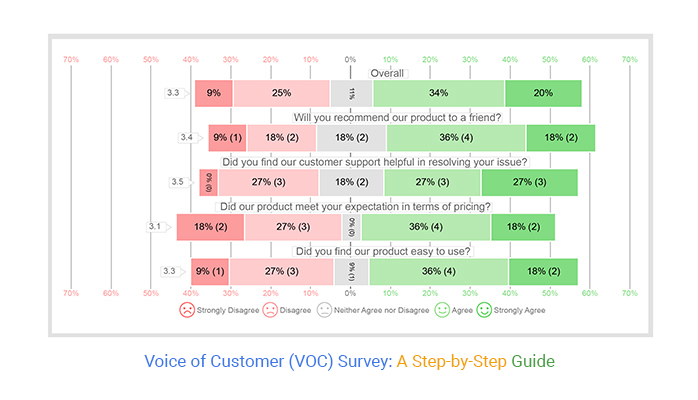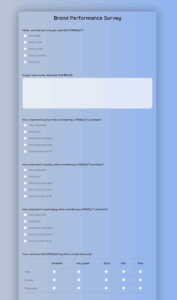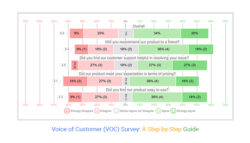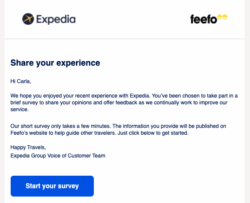Understanding what your customers truly think and feel is absolutely crucial for any business aiming to thrive and grow. It’s not just about what they buy, but *why* they buy it, what they love, and perhaps more importantly, what frustrates them. This invaluable insight, often called the Voice of Customer or VoC, is the secret sauce to refining your products, enhancing your services, and ultimately, building stronger, more loyal relationships.

Gathering this feedback doesn’t have to be a daunting task. While a personalized chat can be incredibly insightful, it’s often not scalable. That’s where surveys come in, offering a structured way to collect data from a broad audience. The good news is, you don’t have to start from scratch every time you want to tap into your customers’ minds. A well-designed template can provide a solid foundation, saving you time and ensuring you’re asking the right questions to get actionable answers.
Why a Voice of Customer Survey Template is Your Secret Weapon
Think about it: consistently collecting customer feedback is a cornerstone of any customer-centric strategy. But if every survey you send out is designed from scratch, you’re not only wasting precious time, but you’re also making it harder to compare data over time. A robust voice of customer survey template provides a standardized approach, ensuring you ask the same core questions consistently, allowing for trend analysis and easier identification of areas for improvement or areas where you’re excelling. It acts as a framework, guiding you to capture specific, relevant insights without reinventing the wheel each time.
Beyond consistency, a template empowers anyone on your team, regardless of their survey design expertise, to launch effective feedback initiatives. This democratizes the process, making it simpler for various departments – from product development to customer support – to run targeted surveys without needing extensive training or oversight. It streamlines the entire workflow, from question selection to data collection, ensuring that valuable feedback isn’t just an occasional event but a continuous flow of actionable information. This ease of use can significantly increase the frequency and quality of your customer interactions.
Moreover, having a pre-defined structure helps you cover all your bases. It’s easy to overlook crucial areas when building a survey ad-hoc. A template, however, guides you to include key question types that uncover everything from overall satisfaction and specific product features to customer effort and future desires. It ensures you’re not just gathering data, but truly comprehensive feedback that can drive meaningful strategic decisions across your organization, making your efforts more impactful.
Ultimately, by leveraging a template, you’re not just creating a survey; you’re building a repeatable, scalable system for understanding your most valuable asset: your customers. This systematic approach transforms sporadic feedback into a continuous stream of insights, allowing your business to be agile, responsive, and truly customer-driven. It transitions you from guessing what customers want to knowing it with confidence, paving the way for sustained growth and innovation.
Key Elements to Include in Your Template
- Clear Objectives: Define what you want to learn from this specific survey.
- Demographic Information: Optionally gather data like age, location, or customer segment to better categorize responses.
- Overall Satisfaction Questions: Include metrics like Net Promoter Score (NPS), Customer Satisfaction (CSAT), or Customer Effort Score (CES).
- Product or Service Specific Feedback: Ask about specific features, usability, or aspects of your offering.
- Open-Ended Questions: Provide space for customers to elaborate in their own words, capturing nuances.
- Touchpoint-Specific Questions: If it’s a transactional survey, ask about a recent interaction (e.g., support call, purchase).
- Future Needs or Suggestions: Gather ideas for improvements or new offerings.
- Thank You and Next Steps: Always thank respondents and let them know how their feedback will be used.
Crafting Your Ideal Voice of Customer Survey Template
While a template provides a fantastic starting point, the real magic happens when you tailor it to your unique business needs and specific survey goals. Not all customer feedback is the same, and your questions should reflect that. For instance, a survey sent immediately after a customer service interaction will differ greatly from one aimed at understanding overall brand loyalty or product satisfaction over a longer period. Consider the customer journey stage they are in, their previous interactions, and what specific decision you are trying to inform with their input.
Think about the different types of surveys you might deploy. Are you looking for transactional feedback, triggered by specific actions like a purchase or a support chat? Or are you aiming for relational insights, gauging overall sentiment and loyalty at regular intervals? Each type demands a slightly different approach within your voice of customer survey template. For transactional surveys, focus on the immediate experience, ease of use, and problem resolution. For relational surveys, delve into broader themes like value, trust, and likelihood to recommend your brand to others.
The phrasing of your questions is paramount. Ambiguous, leading, or overly complex questions can lead to skewed or unusable data. Strive for clarity, conciseness, and neutrality. Avoid jargon where possible, and ensure that each question seeks only one piece of information at a time. For example, instead of asking “Was our product easy to use and did it solve your problem?”, break it into two separate questions to get clearer, more distinct responses on usability and problem-solving effectiveness.
Finally, remember that the template is just one piece of the puzzle. Effective feedback collection also depends on how you distribute the survey and at what point in the customer journey. Is an email link appropriate, or would an in-app prompt be better? Timing is also critical; sending a survey too early or too late can impact response rates and the relevance of the feedback. Continually review your response rates and the quality of the feedback you receive, and don’t be afraid to iterate and refine your template over time to ensure it consistently delivers the insights you need.
* Keep it concise: Respect your customers’ time by making your surveys as short and focused as possible.
* Use a mix of question types: Combine multiple-choice, rating scales, and open-ended questions for varied data.
* Test your survey before launching: Send it to a small internal group or a few trusted customers to catch any issues.
* Follow up on feedback: Show your customers their input matters by communicating how their feedback is being used.
Unlocking the true power of your customer relationships begins with genuinely listening to what they have to say. By systematically gathering their insights, you equip your business with the knowledge to make informed decisions, whether it’s optimizing a product feature or refining your customer service approach. A well-crafted and consistently applied feedback mechanism is an ongoing investment in your customers’ satisfaction and your business’s success.
Embracing this continuous dialogue with your audience transforms guesswork into strategy. It fosters a culture where customer needs are at the forefront of every innovation and improvement. The journey of refining your offerings never truly ends, and the most successful businesses are those that are perpetually tuned into the Voice of Customer, using it as their compass for navigating the competitive landscape and building lasting value.



